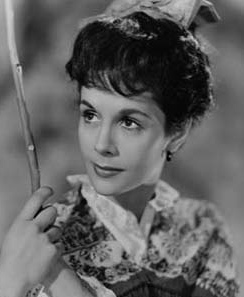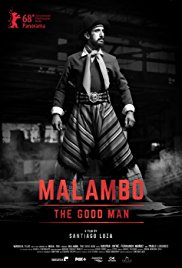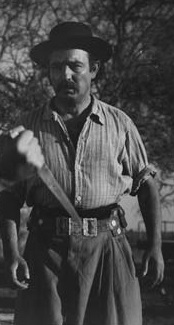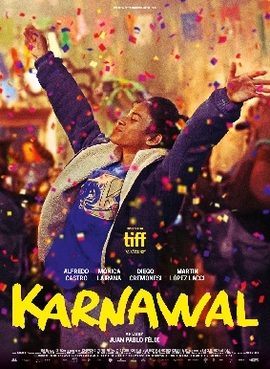
The music of Argentina includes a variety of traditional, classical, and popular genres. According to the Harvard Dictionary of Music, Argentina also has "one of the richest art music traditions and perhaps the most active contemporary musical life."
Jesús María is a city in the province of Córdoba, Argentina, located 49 km due north from the provincial capital Córdoba, on National Route 9, within the valley of the Sierras Chicas. It has about 27,000 inhabitants as per the 2001 census [INDEC].

Rodeo is a traditional equestrian sport in Chile, declared the national sport in 1962.

Cosquín Rock is an Argentine music festival, held annually since 2001. It is currently held in Santa María de Punilla, Córdoba. In Argentina, it takes place in February during the summer, and it is one of the most popular music festivals in the country. Many important national rock singers and groups participate in the festival, along with some of the most important international rock bands, mostly from Spanish-speaking countries like Spain, Mexico, and Uruguay. In the beginning, it was focused only on national rock bands. However, throughout the years, the festival has also included bands from different places and of different genres, such as reggae, rap, cumbia, and cuarteto, among others.

Amelia Bence was an Argentine film actress and one of the divas of the Golden Age of Argentine Cinema (1940–1960).

Delia Amadora García Gerboles better known as Delia Garcés was an Argentine film actress of the Golden Age of Argentine Cinema (1940–1960). She made almost 30 appearances in film between 1937 and 1959 and acted on stage from 1936 to 1966. She won the Premios Sur Best Actress award three times from the Argentine Academy of Cinematography Arts and Sciences, as well as the Argentine Film Critics Association's Silver Condor Award for Best Actress, the Premios Leopold Torre Nilsson, Premio Pablo Podestá, and the inaugural ACE Platinum Lifetime Achievement Award from the Asociación de Cronistas del Espectáculo.

Lucas Demare was an Argentine film director, screenwriter, and film producer prominent in the Cinema of Argentina in the 1940s, 1950s and 1960s.
Leandro Fernández is a Colombian-Spanish actor, musician and director. Son of actor and painter Domingo Fernández Adeba and brother of renowned actor Helios Fernández, and actress and musician Paola Fernández, Fernández studied on "Instituto Departamental de Bellas Artes" in Cali, Colombia, film direction in Madrid, Spain and moved to Miami, FL where he has been promoting the Hispanic theater since his arrival in 1999.

Jineteada gaucha or doma gaucha is a traditional sport in the gaucho culture of Argentina and the Cono Sur – Paraguay, Uruguay, Chile and the Rio Grande do Sul of Brazil. The objective is for the rider to stay on an untamed horse for a number of seconds. The specified time varies from 8 to 14 seconds, depending on the category. In Uruguay a law was enacted in 2006 establishing it as the national sport. In Argentina it may be considered a part of the national intangible cultural heritage.
The Campeonato Nacional de Fútbol Femenino is the highest league of women's football in Nicaragua. Established in 1996, it is run by FENIFUT.

Santiago Loza is an Argentine film director and writer. He studied at Universidad Nacional Film School, Instituto Nacional de Cine y Artes Audiovisuales (INCAA)´s Escuela Nacional de Experimentación y Realización Cinematográfica (ENERC), and Escuela Municipal de Artes Dramáticas. In 1998, he directed the short film Lara y Los Trenes. In 2003, his first feature film, Extraño, was an Official Selection of the Rotterdam Film Festival, where it won the Tiger Award for best film. In 2008 he directed the films Artico and Rosa Patria. In 2009, his film La Invencion de la Carne was an Official Selection of the Locarno Film Festival. That same year he co-founded the Elefante Theater Club, and continues to write plays and direct films.

Teresa Adelina Sellarés, best known as Teresa Parodi, is an Argentine singer and songwriter. She held the inaugural post of Minister of Culture of Argentina from May 6, 2014, to December 9, 2015. She was a deputy to the Mercosur Parliament (Parlasur) representing the nationwide district of Argentina from December 10, 2015, to October 6, 2016. She was elected on the Front for Victory ticket in the 2015 election.

Javier Antonio García Expósito is a dancer and choreographer. He debuted at the age of sixteen in the National Lyric Company. In 1979, he joined the Ballet Nacional de España, as soloist under the direction of Antonio Gades. After receiving an award as the Festival d'Avignon, he founded in 1988 in Cordoba the Ziryab Danza of which he was director, choreographer and dancer. He had considerable success with the show Hijas del Alba. A year later, he received three national awards at the Concurso Nacional de Arte Flamenco. In 1990, he toured with the show La fuerza del destinoall over Europe, and participated as a guest artist with Mario Maya in Diálogos del Amargo. He collaborated on Concierto flamenco para un marinero en tierra with Vicente Amigo before winning the first prize in dance at the Festival del Cante de las Minas in 1994.
Hugo Mac Dougall, born Hugo Mascías was an Argentine writer, screenwriter, and journalist. At the 1943 Argentine Film Critics Association Awards, Mac Dougall won the Silver Condor Award for Best Original Screenplay for his work Malambo (1942). He won it again the following year for his script co-written with Rodolfo González Pacheco and Eliseo Montaine for Three Men of the River (1943).

Gabriela Samper was a Colombian teacher, puppet theater creator and documentary filmmaker. The first woman to participate in documentary filmmaking, she is remembered for her ethnographic short films which explored the diversity of Colombian culture. Winning numerous awards, her work is part of the collection of the Latin American Film Archive at the MOMA in Manhattan.

Malambo, the Good Man is a 2018 Argentine black-and-white drama film directed by Santiago Loza. It was screened in the Panorama section at the 68th Berlin International Film Festival.

Raúl del Valle was a Chilean film and theatre actor who performed for most of his career in Argentina.

The Disciplina Tour was the fifth concert tour by Argentine singer Lali. The tour saw multiple songs performed for the first time live, including those from her fourth studio album, Libra (2020) and songs belonging to her fifth studio album, Lali (2023), such as "Disciplina", "Diva" and "N5". It began on 23 June 2022 and it travelled across Latin America, Europe and Asia, concluding on 8 April 2023.
Estancia is the second ballet composed by Argentinian composer Alberto Ginastera premiered in 1952 commissioned by American writer Lincoln Kirstein. Ginastera took inspiration for the ballet's plot from the epic Martin Fierro by Argentine writer José Hernández, incorporating the nationalist themes and language into his musical score. The ballet was created the same year the composer had made his acquaintance with American composer Aaron Copland. The ballet began its life as a four-part orchestral suite in 1941 before being turned in a one-act ballet.

Karnawal is a 2020 coming-of-age drama film written and directed by Juan Pablo Félix in his directorial debut. It stars Alfredo Castro, Martín López Lacci, Mónica Lairana and Diego Cremonesi. It tells the story of a teenager who is reunited with his father and together they embark on a journey, where truths that they would prefer not to know come to light and they find themselves involved in critical situations. It is a co-production between Argentina, Bolivia, Brazil, Chile, Mexico and Norway.

















